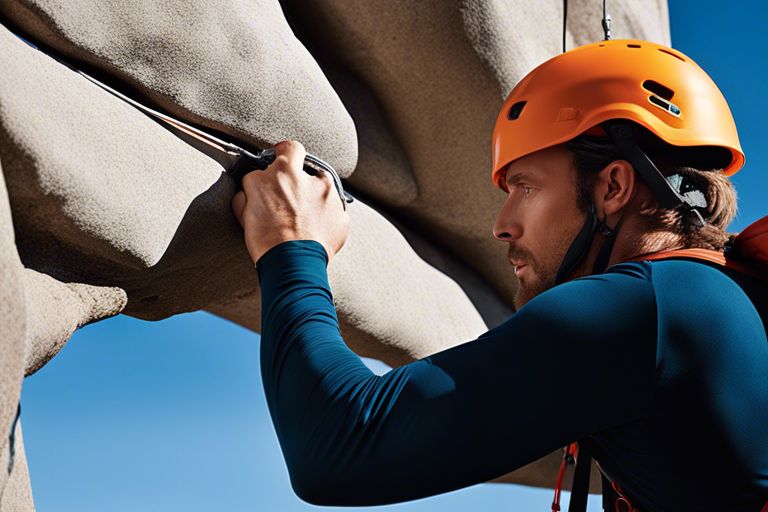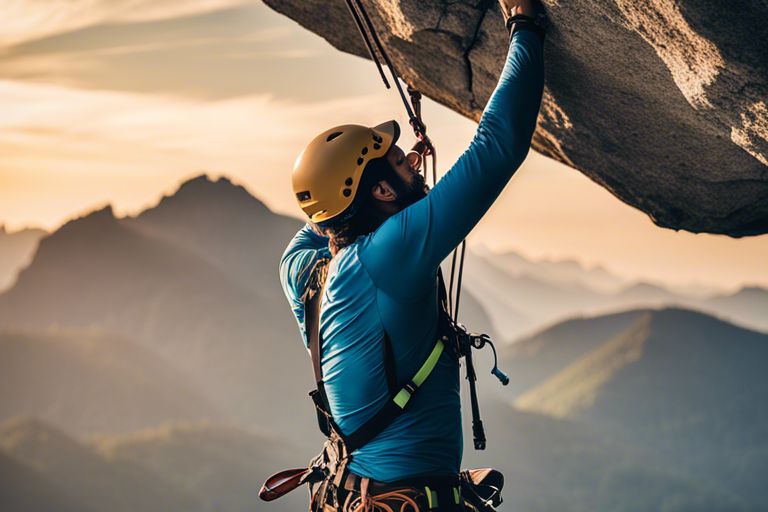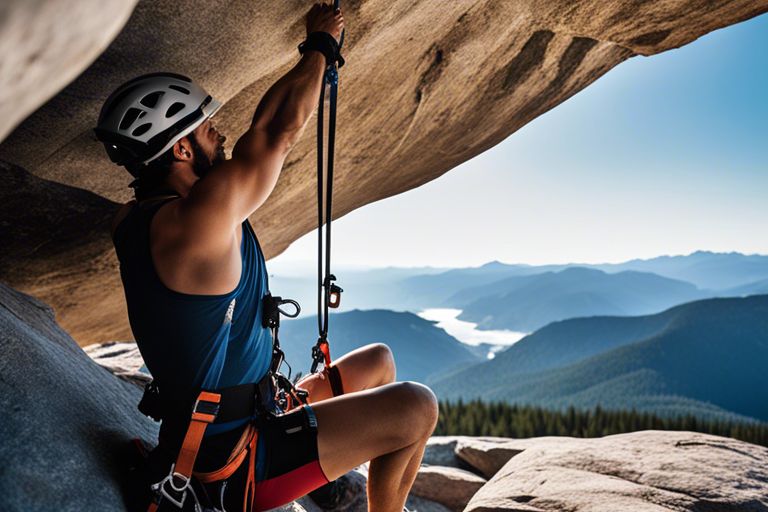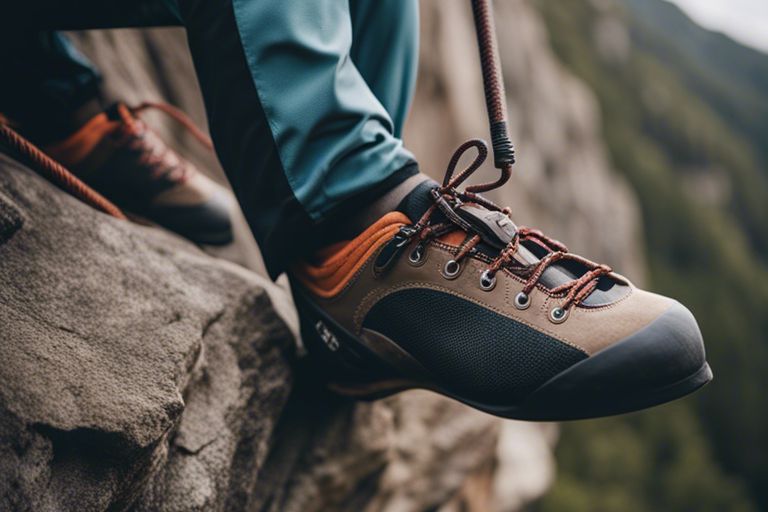This guide will help you securely attach your chalk bag to your harness for a seamless climbing experience. Whether you’re a beginner or an experienced climber, proper attachment ensures easy access to your chalk without the hassle of fumbling during ascents. You’ll learn the best techniques and tips to make your climbing sessions more efficient, allowing you to focus on the rock and your movements. Follow these simple steps to master the art of connecting your chalk bag to your harness with confidence.
Understanding Chalk Bags
To enhance your climbing experience, it’s necessary to understand the purpose and function of a chalk bag. A chalk bag is primarily used to hold climbing chalk, which helps to keep your hands dry for a better grip while climbing. When your hands are sweaty, chalk absorbs the moisture, reducing slippage and allowing you to focus on your moves without the fear of losing grip. Furthermore, a chalk bag serves as a convenient solution to access your chalk quickly, letting you chalk up between climbs without fuss.
Importance of a Chalk Bag
Bags are vital accessories for any climber as they ensure optimal grip and control during your climbs. In addition to maintaining grip, using a chalk bag promotes comfort. It prevents you from having to constantly return to your chalk supply, instead allowing for a quick, efficient recharge of chalk whenever necessary. This efficiency is crucial, as it can also contribute to a more enjoyable climbing experience.
Types of Chalk Bags
Bags come in various styles and designs, tailored to the diverse preferences and climbing styles of individuals. Here’s a quick overview of some common types of chalk bags:
| Type | Description |
| Standard Chalk Bag | A simple design that is versatile and suitable for most types of climbing. |
| Drawstring Chalk Bag | Features a drawstring closure, ensuring that chalk stays secure when not in use. |
| Waist Belt Chalk Bag | Integrated with a waist belt for easy access while climbing. |
| Large Chalk Bag | More spacious, allowing you to carry additional supplies like brushes or small tools. |
| Kids Chalk Bag | Designed for children with fun patterns and smaller dimensions. |
Recognizing the variety of chalk bags available can make it easier for you to choose one that best fits your climbing needs. Each type serves a particular purpose, ensuring that you have the right gear for different climbing conditions. You should consider how often you climb, the routes you tackle, and your personal preferences when selecting your chalk bag.
Choosing the Right Chalk Bag for Your Needs
With the myriad of options available, choosing the right chalk bag can seem overwhelming. When making your selection, consider factors such as size, material, and functionality. A well-structured chalk bag should not only provide ample space for chalk but also fit comfortably on your harness or waist. Look for features like a secure closure system, compatibility with your climbing gear, and a design that reflects your personal style.
This choice not only impacts your climbing performance but also your overall experience as you navigate various terrains. Make sure that the chalk bag you choose complements your climbing routine—whether that’s bouldering or sport climbing. Consider trying on different styles to see what feels best while climbing.
- Prioritize comfort and ease of access.
- Ensure compatibility with your harness or gear.
- Look for durability in materials.
- Consider your climbing style and preferences.
- Recognizing functionality and versatility is key to satisfaction.

Harness Basics
Any climber knows that a proper harness is an imperative piece of gear for climbing. It not only secures you during your ascent but also allows for the attachment of necessary accessories, such as your chalk bag. Before you can attach your chalk bag securely, you need to understand the basics of climbing harnesses.
Types of Climbing Harnesses
Some climbing harnesses are designed for specific activities. These harnesses cater to the needs of different climbers and activities, ensuring comfort, safety, and efficiency. Here’s a breakdown of the main types:
| Type | Description |
| Sport Climbing Harness | Lightweight and minimalistic, ideal for sport climbing. |
| Trad Climbing Harness | Offers additional padding and gear loops for traditional climbing. |
| Mountaineering Harness | Designed for a variety of activities, often with more adjustability. |
| Kids’ Harness | Sized specifically for children to ensure proper fit and safety. |
| Full-Body Harness | Provides better support and security for difficult situations. |
Any of these harness types serve specific needs, and understanding which one fits your climbing style is key.
Key Features of a Climbing Harness
Features are vital when selecting a climbing harness. Understanding these features can help you choose a harness that best suits your climbing needs. The following are key features you should consider when selecting a harness:
- Comfort Padding: Ensures a snug fit during prolonged use.
- Gear Loops: Provides space to attach carabiners, chalk bags, and other gear.
- Adjustability: Allows for a tailored fit to your body size and shape.
- Weight: Should be lightweight for convenience during climbs.
- Safety Features: Includes features like color-coded belay loops for easy identification.
Knowing the right features helps you make informed decisions while selecting a climbing harness that offers safety and comfort.
Harnesses play a crucial role in your climbing experience, enhancing your performance and ensuring your security while you scale heights. From comfort padding that cradles your body to appropriately placed gear loops that organize your imperatives, these details can greatly influence your climbing enjoyment. When you focus on the right features, you can enhance your climbing ventures significantly.
Safety Considerations When Using a Harness
Features can often overshadow crucial safety considerations associated with using your climbing harness. It’s imperative to recognize that while harnesses are designed for safety, they can still pose risks if not properly maintained or used. Always inspect your harness for wear and tear, ensuring that all buckles and loops are secure before heading out. Additionally, you should familiarize yourself with proper usage techniques to prevent harness-related accidents.
Understanding the safety mechanisms in your harness, such as the correct way to buckle it up and how to perform safety checks, is imperative in mitigating risks. Furthermore, it is good practice to know how to attach your chalk bag and other accessories to avoid any potential hazards while climbing. Implementing these safety measures will contribute to your overall climbing experience.
How to Attach a Chalk Bag to Your Harness
Keep in mind that attaching your chalk bag properly is important for a productive climbing experience. A well-secured chalk bag gives you easy access to chalk while keeping it out of the way during climbs. Here’s how to ensure your harness is ready for the task at hand.
Preparing Your Harness
Chalk up your preparation by first inspecting your climbing harness. Make sure the harness fits correctly and that all straps are secure and free from any wear and tear. Having a proper fit ensures your safety while climbing, and allows you to carry your chalk bag effectively. Additionally, familiarize yourself with the loops on your harness, which are designed for attaching gear like your chalk bag.
Once you’ve confirmed your harness is in good condition, you’ll want to decide which loop works best for your chalk bag. Most harnesses come equipped with two gear loops; generally, it’s advisable to choose the one that sits on your non-dominant side. This positioning allows you to easily reach for chalk while keeping your dominant hand free for climbing movements.
Positioning the Chalk Bag
Harness the power of proper positioning when attaching your chalk bag to your harness. The optimal position for your chalk bag is typically around your waist level and aligned with your thigh. This setup provides quick access to the chalk while minimizing interference with your climbing movements. Make sure that when you retrieve chalk, you can do so without twisting or bending uncomfortably.
As you establish the optimal location for your chalk bag, take the time to experiment during your climbs. You may want to adjust the height and alignment slightly, depending on your technique and which climbing route you are tackling. Your comfort is key, and finding that sweet spot will enhance your climbing experience.
Securing the Chalk Bag with Loops
Clearly, securing your chalk bag to the harness’s gear loops is one of the most important steps. Begin by sliding the drawstring or the bag’s attachment strap firmly through the designated loop. Make sure to pull it snug so it doesn’t bounce or sway while you climb. This not only ensures easy access but also helps prevent the bag from getting caught on any protruding rock edges.
Once you have threaded the chalk bag through the loop, double-check to ensure everything is secure and properly aligned. If you encounter difficulty, consider adjusting the bag’s angle or the tightness of the strap until you find a position that feels right. The correct securing will eliminate distractions, allowing you to focus solely on your climb.
Using Carabiners for Extra Security
If you’re looking for an extra layer of security for your chalk bag, using carabiners can be a great option. By attaching your chalk bag with a lightweight carabiner, you ensure that it stays in place regardless of how much movement you make. Plus, carabiners add versatility, as your chalk bag can be quickly removed or reattached as needed.
This method also allows you to attach your chalk bag to multiple loop positions on your harness. If you find that one side isn’t comfortable, you can easily switch the carabiner to the opposite side or even change the height of the bag with just a quick unclipping and re-clipping. This flexibility can greatly enhance your climbing experience.
Adjusting the Chalk Bag Height
Chalk bags aren’t a one-size-fits-all accessory; adjusting the height is crucial for optimal performance. The ideal height will typically vary based on personal preference and arm reach, and it’s something you can adjust until you find what feels most comfortable while climbing. Aim for a position where you can easily reach into the bag without straining.
The right height can make a significant impact on your climbing efficiency, allowing you to chalk up effortlessly between moves. As you practice, take note of any adjustments you make; this will help refine your setup for the next climb. Finding that perfect balance and position will ultimately elevate your climbing experience.

Tips for a Better Chalk Bag Experience
Unlike many other climbing accessories, a well-thought-out chalk bag can drastically enhance your climbing performance and experience. Knowing how to make the most of your chalk bag can make the difference between smooth ascents and frustrating climbs. Here are some tips to ensure a better chalk bag experience:
- Choose a chalk bag that fits your personal style and climbing needs.
- Regularly check the attachment points to ensure security.
- Use a chalk ball for less mess and better control.
- Consider the fabric and design for quick access and durability.
- Practice your chalking routine before hitting the wall.
Any climber can benefit from implementing these tips to enhance their chalk bag experience.
Positioning for Accessibility
Tips on positioning your chalk bag are crucial to ensure quick and easy access while you climb. The ideal position for your chalk bag is on the side of your harness that aligns with your dominant hand. This way, you can chalk up quickly before making your next move, improving your efficiency and overall climbing flow. Adjusting the height of the chalk bag can also make a difference; it should be within arm’s reach but not so low that it becomes cumbersome or brushes against the rock face.
Additionally, researching the positioning that best complements your climbing style is worth your time. If you primarily boulder, a slightly different placement may be suitable compared to when you’re lead climbing. Experimenting with various positions and attachments can lead to significant improvements in your climbing experience.
Keeping Chalk in Check
With the right approach to keeping chalk in check, you’ll avoid unnecessary mess and frustration. One effective method is to use a chalk ball, which contains chalk in a mesh bag, allowing you to easily apply it without spilling it everywhere. If you prefer loose chalk, be mindful of the quantity you put in your bag; excessive chalk can lead to a messy situation that may hinder your climbing performance. Additionally, ensure your bag has a secure closure to minimize chalk spillage during climbs.
Experience has shown that climbers who regularly maintain the cleanliness of their chalk bags tend to have a smoother and more enjoyable experience. By minimizing chalk buildup inside the bag, you can ensure you’re using your chalk to its full potential without distractions or waste. This attention to detail can significantly elevate your sport’s enjoyment level.
Maintenance of Your Chalk Bag
Assuming you’re dedicated to your climbing, maintaining your chalk bag is just as important as choosing the right one. Start by periodically checking for wear and tear around the attachment points, fabric, and closure mechanisms. Keeping your chalk bag clean is crucial, so consider washing it according to the manufacturer’s instructions or handwashing when necessary. A clean bag ensures optimal performance of your chalk and extends the life of the bag.
The more attention you pay to regular maintenance, the longer your chalk bag will serve you efficiently. By taking care of small issues before they turn into big problems, you ensure that your climbing experience remains enjoyable and distraction-free. Regular cleaning and checks can also contribute to improving your chalk management and your overall climbing confidence.
Factors to Consider When Choosing a Setup
Not all setups are created equal, and selecting the right way to attach your chalk bag to your harness can significantly impact your climbing experience. Here are some factors to keep in mind when making your choice:
- Your climbing style
- The type of climbing you engage in
- Environmental conditions and terrain
- Bag size and weight
- Your personal preferences related to accessibility
Any of these factors can influence how you secure your chalk bag, so it’s crucial to consider them thoughtfully.
Climbing Style and Preferences
Now, your climbing style—whether it’s bouldering, sport climbing, or traditional climbing—plays a pivotal role in determining how you attach your chalk bag. For instance, if you primarily boulder, you might prefer a setup that allows for quick, one-handed access to your chalk bag, while sport climbers may focus on a more secure attachment that doesn’t jostle during dynamic movements. By assessing your specific climbing habits, you can ensure that your chalk bag remains conveniently accessible without hindering your performance.
Furthermore, personal preferences can shape the way you set up your gear. Some climbers prioritize quick access and choose a light, minimalistic bag, while others might favor more storage options for a longer day at the crag. Understanding your own needs and integrating them into your setup can enhance your overall climbing experience.
Environment and Conditions
One of the significant aspects to consider is the environment in which you’ll be climbing. If you often find yourself climbing in wet or muddy conditions, a chalk bag that attaches securely and doesn’t budge is critical. On the other hand, during drier weather, you might prefer a setup that allows for more flexibility and ease of access as you navigate different routes. The conditions can dictate how you approach your chalk bag attachment.
Preferences also extend to specific environmental challenges. If you are climbing on rugged terrain or in areas prone to high winds, you’ll want to ensure your chalk bag remains securely fastened to prevent any loss during your ascent. Additionally, consider the accessibility of your bag when navigating over rocky surfaces; the less fidgeting you have to do with gear, the better you can focus on your climb.
Bag Size and Weight
Consider how the size and weight of your chalk bag impact your climbing efficiency. Heavier bags may provide extra storage but can weigh you down, especially on longer climbs. Conversely, a compact chalk bag might be lighter and easier to carry but may not hold the quantity of chalk you require for extensive sessions. Finding the right balance between these factors is vital for optimize your climbing experience.
Plus, consider the overall design and shape of your chalk bag as well. A bag with a larger opening may allow for faster chalk distribution, while a smaller, more streamlined design can reduce bulk. Ultimately, picking a size and weight that aligns with your climbing goals and personal preferences can make all the difference in your performance. Be sure to evaluate whether you lean more toward lightweight, minimalistic options, or if you prefer a more robust bag with added features to accommodate your chalk needs.

Troubleshooting Common Issues
Once again, encountering issues with your chalk bag attachment can disrupt your climbing experience and slow down your performance. It’s vital to address these common problems to ensure that your gear works seamlessly with your harness. Below are some common troubleshooting steps tailored for you to enhance your climbing experience.
Slipping Chalk Bag
Troubleshooting a slipping chalk bag often begins with identifying how the bag is attached. If your chalk bag is constantly sliding up or down your harness, you may need to check the attachment method. Ensure you’re using the right type of loop or clip that securely fastens the bag in place. Loose or frayed attachment points can also contribute to slipping, so it’s important to inspect both your harness and chalk bag for any wear and tear that could compromise their fit.
Additionally, consider adjusting the tension of your chalk bag’s belt or strap. If it’s too loose, it won’t hold steady while you climb. Conversely, if it’s too tight, it might be uncomfortable and restrict your movements. Finding the right balance will keep your chalk bag securely attached without sacrificing comfort.
Inaccessibility During Climbs
Issues regarding inaccessibility during climbs can greatly affect your ability to draw chalk when you need it most. If your chalk bag is positioned awkwardly or doesn’t allow for easy access while climbing, you’ll find yourself fumbling at crucial moments. To resolve this, make sure your chalk bag is positioned below your waist or at a side that feels natural for you to reach during climbs.
Another aspect to consider is the size and shape of your chalk bag. A larger chalk bag might obstruct your movement or be cumbersome to access quickly. You may want to opt for a bag that conforms more to your body or has an opening that allows for a seamless reach, facilitating quick and easy access when you require it.
Compatibility Issues with Harness
There’s a possibility that your chalk bag and harness may not be compatible in terms of attachment. Different brands and models can have distinct designs that may cause problems when trying to secure your chalk bag. If you find yourself struggling with one of these bags, it may be time to evaluate your choices and look for accessories specifically designed to enhance compatibility with your harness.
During your search, prioritize checking the specifications and user reviews for compatibility insights. Sometimes, your ideal chalk bag might come with a unique suspension system that is more suited for certain harness styles. Taking these factors into account ensures that you avoid potential incompatibility issues and enjoy a seamless climbing experience.
To wrap up
To wrap up, attaching your chalk bag to your harness is a straightforward process that can greatly enhance your climbing experience. By following the steps outlined, you ensure that your chalk bag is secure and easily accessible whenever you need a quick refresh of chalk during your climb. Be mindful of, the traditional method involves threading the chalk bag’s loop through your harness’s gear loop, while other options like carabiners offer flexibility based on your personal preference and climbing style. Always take the time to check your setup before you start your climb, ensuring everything is secure, so you can focus on your performance without distractions.
Additionally, don’t forget to practice attaching and detaching your chalk bag in a controlled environment. This will help you become more familiar with the process, making it second nature when you’re out on the rock. A well-attached chalk bag not only maximizes convenience but also promotes safety as you navigate the vertical challenges ahead. By taking a moment to properly set your gear, you are investing in a smoother and more enjoyable climbing experience overall.




